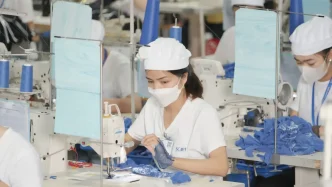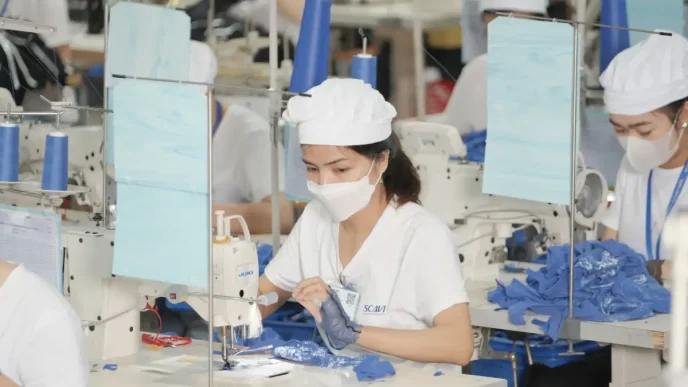Thailand’s manufacturing sector is grappling with a deepening crisis as factory closures accelerate across the country, threatening jobs and economic stability. Over the past two years, an average of at least 100 businesses have shut down each month, according to data from the Kasikorn Research Center (KResearch), with forecasts suggesting this troubling trend will persist throughout 2025. While the government remains cautiously optimistic, citing new investments and emerging sectors, industry experts warn of systemic challenges that could undermine the nation’s industrial backbone, particularly for small and medium-sized enterprises (SMEs).
A Persistent Wave of Closures
The scale of the crisis is stark. Since 2023, Thailand has seen a steady decline in operational factories, with the net reduction—calculated by subtracting closures from new openings—averaging just 52 per month over the past two years. This marks a dramatic drop from the 127 monthly average recorded between 2021 and 2022. While 2024 saw slightly more factory openings than closures, the persistent rate of over 100 closures per month paints a worrying picture for an economy historically reliant on manufacturing as a key driver of growth.
Specific industries are bearing the brunt of this downturn. The garment, textile, furniture, metal, and steel sectors are under severe strain, hit by rising costs, weak domestic demand, and intense global competition. Bantoon Juicharern, chairman of the Federation of Thai Industries’ Iron and Steel Industry Group, highlighted the dire state of the steel sector, where utilisation rates have plummeted to a mere 25-26%. He warned that further expansion of production capacity, combined with an influx of cheap Chinese steel exports flooding the global market, could exacerbate closures and create unfair competition for Thai producers.
The automotive industry, long a pillar of Thailand’s industrial landscape, is also faltering. Recent decisions by major manufacturers Subaru and Suzuki to halt production in the country have sent shockwaves through the sector. Kobsak Pootrakool, chairman of the Federation of Thai Capital Market Organizations (FETCO), cautioned that businesses failing to adapt to changing market demands and clinging to outdated models are unlikely to survive. “Innovation and product upgrades are no longer optional—they are essential for competitiveness,” he said.
Government Optimism Amidst Industry Alarm
Despite mounting evidence of industrial decline, the Thai government remains hopeful. Industry Minister Akanat Promphan acknowledged the closures, particularly in the automotive sector, but urged against undue alarm. “The business landscape is dynamic; while some close, others emerge,” he said, pointing to significant investments from international automotive giants as a sign of enduring confidence in the Thai market. Mazda has committed 5 billion baht, while Toyota has pledged a substantial 55 billion baht, bolstering hopes of a sector revival.
Akanat also highlighted positive developments in other areas, such as electronics, semiconductors, and artificial intelligence (AI), which have attracted record levels of investment promotion. He outlined the government’s commitment to industrial reform, with a focus on transparency and inclusivity for businesses of all sizes. Plans to promote environmentally and socially responsible practices, leveraging foreign direct investment (FDI) to introduce new technologies and facilitate knowledge transfer to smaller operators, are central to this vision.
However, industry leaders are less sanguine. Saengchai Teerakulvanich, chairman of the SME Confederation of Thailand, confirmed the widespread nature of the closures, noting that they extend beyond factories to a broad range of businesses. He identified two types of closures: registered businesses that formally cease operations and unregistered ones that quietly slow down or become inactive. Saengchai pinpointed seven key factors driving this trend, including rising operational costs, limited access to funding, and global competitive pressures.
SMEs: The Heart of the Crisis
Small and medium-sized enterprises, which form the backbone of Thailand’s economy, are particularly vulnerable. Kiatipong Ariyapruchya, a senior economist at the World Bank in Thailand, underscored the importance of FDI in driving technological advancement for SMEs but warned of significant hurdles. Access to funding, inadequate infrastructure, skills shortages, and regulatory obstacles—particularly around fair competition, trade, and investment—remain critical barriers to their survival.
The challenges facing SMEs are compounded by the threat of automation and integration into global supply chains. Kobsak Pootrakool of FETCO expressed concern over potential job losses as businesses increasingly turn to automation to cut costs. For SMEs, which often lack the capital to invest in such technologies, the risk of being left behind is acute. “The global market waits for no one,” he warned. “Adaptation is the only path forward.”
A Glimmer of Hope or a False Dawn?
Amidst the gloom, there are tentative signs of recovery. Data from the Department of Industrial Works for January 2025 showed 147 new factory openings, representing 18 billion baht in investment and the creation of 6,257 jobs. This injection of capital and employment opportunities offers a potential lifeline to the beleaguered sector. However, whether this positive momentum can be sustained—and whether it will be enough to offset the ongoing wave of closures—remains uncertain.
The broader economic implications of this crisis are profound. Manufacturing has long been a cornerstone of Thailand’s export-driven economy, and a sustained decline could ripple through related sectors, from logistics to retail. Job losses, particularly among low-skilled workers in vulnerable industries, could exacerbate social inequalities and fuel public discontent. Moreover, the influx of cheap imports, such as Chinese steel, raises questions about the adequacy of Thailand’s trade protections and its ability to compete in an increasingly cut-throat global market.
Near Term Challenges and Opportunities
The road ahead for Thailand’s manufacturing sector is fraught with challenges, but it is not without opportunities. The government’s focus on industrial reform and attracting FDI could pave the way for a more resilient and innovative economy. Emerging sectors like AI and semiconductors offer a chance to diversify away from traditional industries and position Thailand as a regional hub for high-tech manufacturing. However, these benefits are unlikely to materialise without targeted support for SMEs, which employ a significant portion of the workforce and are critical to inclusive growth.
Addressing the root causes of factory closures will require a multi-pronged approach. Streamlining regulatory frameworks to ensure fair competition, improving access to affordable financing, and investing in skills training to bridge the gap between workforce capabilities and industry needs are all essential steps. Additionally, policymakers must grapple with the impact of global trends, such as automation and shifting supply chains, which are reshaping the manufacturing landscape worldwide.
For now, the coming months will be pivotal in determining the long-term health and resilience of Thailand’s industrial sector. While new factory openings and high-profile investments provide a glimmer of hope, the persistent rate of closures serves as a sobering reminder of the scale of the crisis. As Thailand navigates these turbulent waters, the balance between optimism and pragmatism will be crucial. Without decisive action, the nation risks losing its standing as a manufacturing powerhouse in South East Asia—a loss that could have far-reaching consequences for its economy and its people.














